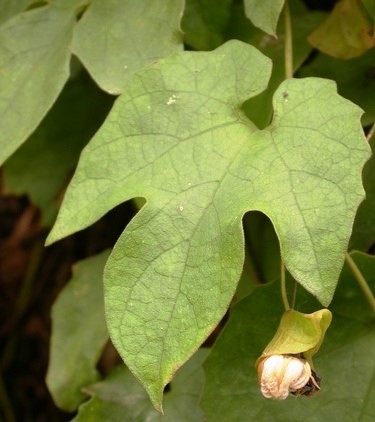Momordica angustisepala

|
|
Momordica angustisepala Common Names: Narrow-sepaled Balsam-Apple, Wild Bitter
Gourd Scientific
Classification Kingdom: Plantae Phylum: Streptophyta Class: Equisetopsida Subclass: Magnoliidae Order: Cucurbitales Family: Cucurbitaceae Genus: Momordica Species: M. angustisepala Authority: Harms Synonyms: Momordica bracteata Hutch. & Dalziel Morphological Description Momordica angustisepala is a perennial, dioecious climbing herb in the Cucurbitaceae
family, typically reaching 1–3 m in length: · Stem: Slender, angular, hairy, with tendrils for climbing; green
when young, becoming woody at base (Fern, 2024). · Leaves: Alternate, broadly ovate to suborbicular, 5–12 cm long, 3–5
lobed, margins dentate, hairy beneath (Burkill, 1985). · Flowers: Yellow, unisexual; male flowers in racemes, female flowers
solitary; petals 5, 1–2 cm long; blooming in wet seasons (Govaerts, 2024). · Fruits: Ovoid, 3–5 cm long, green turning orange-red when ripe, with
narrow sepals; seeds flat, 8–10 mm long, encased in red aril (Fern, 2024). Distribution and Habitat Momordica angustisepala is native to tropical Africa, with a wide ecological
adaptability: · Range: Nigeria, Ghana, Cameroon, Sierra Leone, extending to Central
African Republic and Angola (Burkill, 1985; Govaerts, 2024). · Habitat: Lowland rainforests, montane forests (up to 1,500 m), forest
edges, disturbed areas; thrives in full sun, well-drained loamy soils (Fern,
2024). Ethnopharmacology Momordica angustisepala is a lesser-known species of the Momordica genus,
traditionally used in African herbal medicine for its antimicrobial,
anti-inflammatory, antioxidant, and antidiabetic properties. Local healers use
various parts of the plant, particularly the leaves and roots, to treat
malaria, fevers, digestive disorders, wounds, and infections. It is also
employed in managing diabetes and high blood pressure, with preparations often
taken as infusions or decoctions. Phytochemical studies have shown the presence
of flavonoids, alkaloids, saponins, and tannins, which are believed to
contribute to its therapeutic effects. While traditional use supports a range
of medicinal applications, scientific studies on Momordica angustisepala are
still limited, and more research is needed to confirm its pharmacological
potential and safety profile. · Abortifacient: Root extract in Nigeria; aqueous extract (0.8 mg/mL, 3.5–4
mL/kg) induced abortion in mice at all pregnancy stages, mimicking oxytocic
action (Lutterodt, 1988). · Antipyretic: Leaf decoctions in Ghana for fevers. · Digestive Aid: Fruit pulp in Cameroon for stomachaches. · Antimicrobial: Leaf infusions in Nigeria for infections; chloroform extract
inhibited Escherichia coli (MIC 0.5 mg/mL) (Akinyemi et al., 2005). ⚠ Toxicity Profile: Root extracts at high doses (>5 mL/kg) caused
uterine overstimulation and potential toxicity in guinea pigs; use with caution
in pregnancy (Aguwa, 1988). Cultivation and Uses · Growth: Prefers full sun, well-drained soils; drought-tolerant,
frost-resistant to -2°C; propagated by seeds (soaked 24 hours) or cuttings
(Fern, 2024). · Non-Medicinal: Fruits occasionally eaten as famine food; stems used for
rope in rural Nigeria (Burkill, 1985). References
External Links More Pictures |
|
| Compounds of Momordica angustisepala |
|
| References |